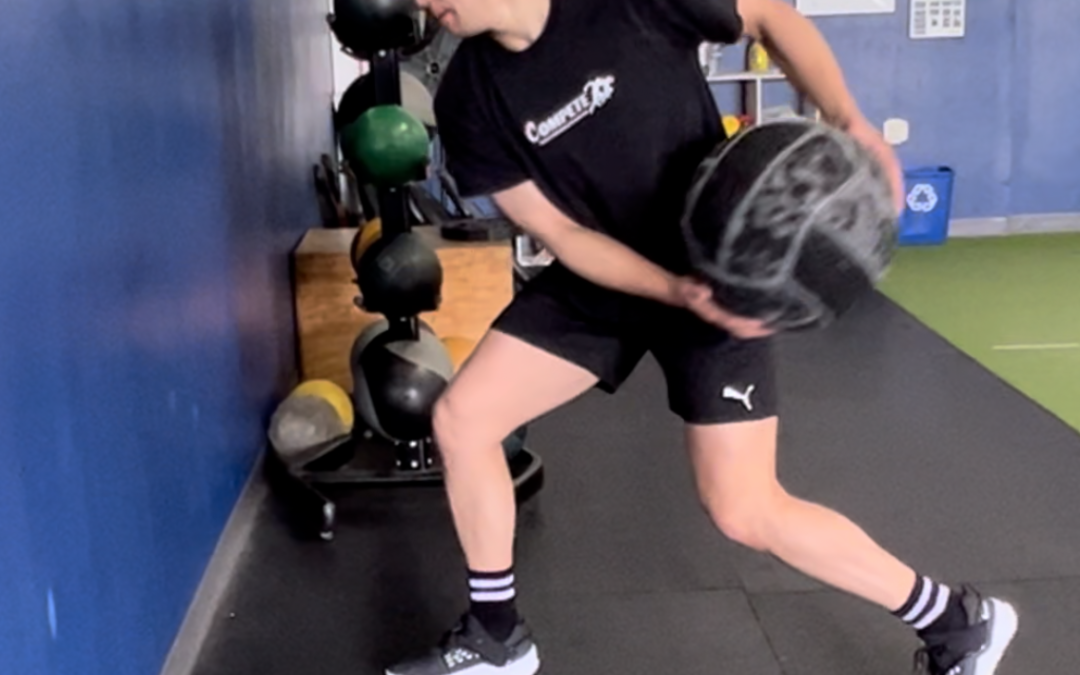The ability to produce rotational power is critical in nearly all sports, including ice hockey. You need rotational power to shoot, take face-offs, change direction, and manage body contact of all types. There are many modalities that can be used to train “core” strength such as cables and bands. One of my favorite methods is using rotational medicine ball throws in a series of progressions. Be sure the ball is the appropriate weight and the wall is sturdy enough to handle the contact. I still encourage younger athletes to get out and play other sports such as baseball, golf, and racquet sports to work to enhance these same qualities and gain healthier athleticism. These throws are to be of maximum effort by physically mature athletes.
Exercises with bands such as the Pallof press and/or holds are a great way to activate the core for rotational training. We then move into single-arm cable pulls and pushes. The next step would be to move into rotational throws with your feet stationary. When you keep your feet stationary you are left with limited hip rotation. The primary power generation is initiated from the upper body and core musculature. A split stance can also be used to increase the difficulty. This movement sacrifices stability to place a greater demand on “core” musculature. The primary focus of this movement is the deceleration/acceleration component, and having the ability to change direction quickly while unstable.
The second level of progression has a lateral step toward the wall as you perform the throw. Initiate the movement with your lower body and step towards the wall, which allows you to open your hips toward the target. By doing so, it requires the athlete to coordinate the lower body and upper body to produce higher levels of power. This coordination is very similar to hockey movements such as the slap shot, for example.
The third level of progression begins with a lateral hop away from the wall before stepping back toward the wall to perform the throw. The goal here is to plant the back leg to decelerate and explode off that leg to produce power and drive toward the wall. Coordination and technique are very important to reduce the risk of injury. The intensity is high, so the number of repetitions should be kept low. Emphasize quality over quantity and include plenty of rest.
Within most of these drills, you can adjust several variables based on different goals. Examples include your stance, distance of hops, speed of hops, and distance from the wall. Have fun and be creative. Talk with your local athletic trainer/strength coach about ideas for set and rep schemes suitable for you.
Mike Hannegan is an Athletic Trainer and Strength Coach with ten years of experience in the NHL with the Anaheim Ducks and St. Louis Blues. He is currently the Director of the Compete Sports Performance and Rehabilitation facility inside The Rinks Yorba Linda Ice located in beautiful Orange County, CA. He can be reached at mike@competeperformance.com.

